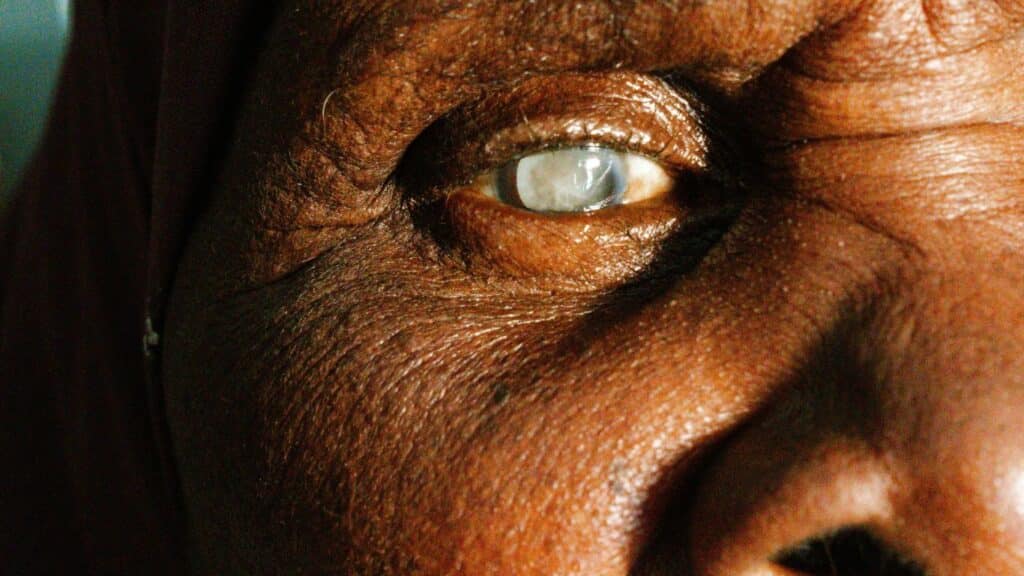The cornea plays a crucial role in our eyes, serving as a protective shield and helping to focus light precisely onto the retina. As the transparent front part of the eye, it's made up of five layers that work together to let light in while bending light rays to provide clear vision.
But what happens when the vision isn’t quite right? Enter refractive errors like myopia, hyperopia, and astigmatism! Myopia, or nearsightedness, can make distant objects look blurry, while hyperopia can make nearby things challenging to see, often leading to eye strain. Astigmatism occurs when the cornea isn’t perfectly shaped, resulting in double vision or blurred vision at any distance.
But, how does LASIK surgery improve vision? This innovative procedure addresses those corneal irregularities, paving the way for clearer vision for many people. In this blog post, we’ll take a closer look at these fascinating topics and dive into the question, "How does LASIK surgery improve vision?"
Have you ever wondered what actually happens during LASIK surgery? Here's a step-by-step breakdown of this remarkable procedure, which has transformed the lives of millions by providing clearer vision and reducing the need to wear glasses or contact lenses.
Before undergoing laser eye surgery, a comprehensive preoperative LASIK candidacy evaluation is critical to determine if you are a suitable candidate. During this assessment, your eye care professional will measure your corneal thickness, examine the overall health of your eyes, and conduct a refraction test to evaluate your prescription. According to the American Refractive Surgery Council, around 85% of patients are deemed eligible for LASIK following extensive evaluations, although factors such as age, prescription stability, and the presence of certain eye conditions (like dry eye syndrome or cataracts) may influence suitability.
Once cleared for surgery, the first step in the LASIK procedure involves creating a thin flap in the cornea. This is typically done using a femtosecond laser or a microkeratome, which allows for a precise cut without affecting the underlying tissue. Studies indicate that the femtosecond laser method enhances the accuracy and safety of flap creation, reducing the likelihood of complications. The flap is gently lifted to expose the underlying corneal tissue, allowing for the subsequent reshaping process.
With the flap lifted, the next phase entails reshaping the cornea using an excimer laser. This advanced laser technology employs a cool beam of ultraviolet light to precisely remove microscopic amounts of corneal tissue. By flattening or steepening the cornea, the refractive errors can be corrected.
After reshaping is complete, the surgeon carefully repositions the corneal flap. This flap acts as a natural bandage, promoting healing and protecting the underlying corneal structure. Patients typically experience improved vision within just a few hours post-surgery, although complete healing can take several weeks.
At the heart of LASIK surgery's effectiveness is its ability to change the shape of your cornea. By changing the curvature of the cornea, LASIK changes the way light enters the eye, directly addressing refractive errors.
Refractive errors, such as myopia, hyperopia, and astigmatism, occur when the eye cannot properly focus light, leading to fuzzy images. LASIK eye surgery effectively corrects these errors by modifying the corneal surface with pinpoint laser precision.
The ultimate aim of laser eye surgery is to ensure that light is precisely focused on the retina. By modifying the cornea’s shape, LASIK optimally aligned light rays with the retina's surface, enabling clearer image formation. By ensuring precise light convergence, LASIK eye surgery significantly enhances both visual acuity and overall patient satisfaction.
When considering LASIK surgery, one of the most compelling reasons people choose to undergo the procedure is the promise of freedom from the need to wear contact lenses or glasses. This newfound liberty often saturates every aspect of life, enhancing both convenience and confidence in daily activities.
Imagine waking up and seeing clearly without the need for corrective lenses. For many LASIK patients, this dream becomes a reality, as extensive research shows that 97% of patients achieve 20/40 vision or better following the procedure. This allows you to enjoy activities like swimming, sports, or traveling without the hassle of glasses or contacts.
The impact of clear vision extends beyond practical benefits; it also influences self-esteem and appearance. Many individuals feel more confident in social situations and at work without the visual barrier of glasses, which can sometimes affect one's personal style. With a boost in self-confidence, LASIK patients often report better quality of life and overall satisfaction with their appearance.
Although some individuals experience dry eyes post-surgery, LASIK has been associated with reduced symptoms for many. Research done by the Cornea Research Foundation of America found that patients who had LASIK experienced lower instances of dry eye symptoms long-term compared to those who relied on contact lenses. This reduction can lead to greater comfort and overall satisfaction in everyday life, as dry eyes can significantly affect vision quality and comfort.
LASIK's benefits are not just immediate but often last for years. A study indicated that most patients maintain their improved vision for at least 10 years post-surgery, with only a small percentage experiencing regression. This long-lasting impact of LASIK means patients can enjoy a clearer world for years to come, marking a shift towards a lifestyle with reduced reliance on corrective eyewear.
At Texas Vision & Laser Center, we understand the life-changing impact of LASIK surgery and are committed to providing exceptional care and results. With our state-of-the-art technology and an experienced eye surgeon, we strive to make the LASIK experience as comfortable and successful as possible for our patients. Contact us today to learn more about how we can help you achieve sharper, clearer vision through LASIK surgery.
Reap The Benefits of LASIK Surgery With Texas Vision & Laser Center Today!
Determining whether LASIK surgery is right for you involves considering various candidacy factors. It's important to ensure that your eye health, lifestyle, and expectations align with the criteria for a successful outcome from the procedure.
Before pursuing LASIK, potential candidates must undergo a comprehensive eye examination to assess their suitability for the procedure. Ideal candidates are at least 18 years old, have stable vision for at least a year, and are free from conditions that may impair healing, such as autoimmune disorders.
Age plays a crucial role in LASIK candidacy since the eyes continue to change shape throughout adolescence. Furthermore, corneal thickness is essential; individuals with thinner corneas may not have sufficient tissue for effective laser reshaping.
Certain pre-existing eye conditions can disqualify a person from LASIK surgery. Conditions like glaucoma, cataracts, and severe dry eye can complicate the procedure and affect outcomes.
While LASIK is generally safe, it is vital to be aware of potential side effects and complications that can arise.
Post-surgery dry eyes are among the most commonly reported side effects. The symptoms can range from mild discomfort to significant irritation, often exacerbated by environmental factors like wind and screen use. Fortunately, most patients see improvement within a few weeks as the cornea heals, but a small percentage may experience enduring dry eye symptoms that require ongoing treatment.
Another potential side effect is experiencing glare and halos, particularly at night, which can be particularly disconcerting for those who frequently drive at night. However, many patients adapt over time, and further advancements in technology have reportedly reduced these occurrences in contemporary procedures.
Undercorrection or overcorrection can also affect visual outcomes. In rare cases, patients may not achieve the desired level of vision correction or experience overcorrection that results in hyperopia (farsightedness) or astigmatism. These vision problems can sometimes be addressed with a follow-up enhancement procedure.
Having made the decision to undergo LASIK, the journey to clearer vision doesn't end with the surgery. In fact, proper immediate care and ongoing monitoring are essential for ensuring the best outcomes and maintaining eye health in the long run.
Following LASIK surgery, it's normal to experience mild discomfort and fluctuation in vision for the first 24 hours. To alleviate potential symptoms, your doctor may prescribe medication or eye drops. It's essential to avoid rubbing or touching your eyes during this time to allow for proper healing.
Your doctor will schedule several follow-up appointments after surgery to monitor your progress and address any concerns. These appointments are crucial for ensuring proper healing and identifying any issues that may require further intervention.
Even after successful LASIK surgery, it's important to continue regular eye exams and maintain good eye hygiene practices. This includes wearing the best sunglasses after LASIK surgery when necessary, using lubricating eye drops as needed, and following any post-operative instructions provided by your doctor.
With its numerous benefits and exceptional success rates, LASIK surgery is a proven option for achieving clearer, sharper vision without the need for corrective eyewear. At Texas Vision & Laser Center, we are dedicated to helping our patients achieve their optimal visual potential through personalized care and advanced technology. Schedule your consultation today to learn more about how we can help you experience life-changing outcomes with LASIK!
Reap The Benefits of LASIK Surgery With Texas Vision & Laser Center Today!



